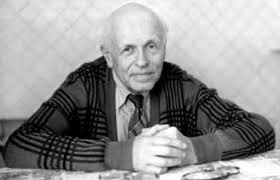On 15 December 2018, Ukraine completed the penultimate step towards attaining the multigenerational dream of independence for its Orthodox Church, hitherto subjugated to Moscow. The Unification Council, although achieving an imperfect unity, had molded representatives of two hitherto schismatic churches, Ukrainian Orthodox Church of the Kyiv Patriarchate and Ukrainian Autocephalous Orthodox Church, and several representatives of the Ukrainian Orthodox Church of the Moscow Patriarchate, into a new Orthodox Church in Ukraine, and sent them on the way to becoming a legitimate and recognized Church in the Orthodox family of churches. But attempts to secure an independent Church in Ukraine go back to 1918.
Although the Kyivan Rus, a medieval kingdom with the capital in Kyiv, received Christianity from Constantinople in 988, political upheavals of the following centuries led to the rise of the Moscow Tsardom, the Moscow Church splitting off from Constantinople in 1448 and engulfing the Kyiv Metropolia in 1686, although having been given only management rights.

The dissolution of the Russian empire in 1917 and attempts to set up an independent Ukrainian state saw ultimately unsuccessful attempts to establish also an independent Church, and in 1921 giving birth to the Ukrainian Autocephalous Orthodox Church (UAOC), which, after being crushed by the Bolsheviks, reemerged as a schismatic Church in 1990. In 1992, after the breakup of the USSR and emergence of an independent Ukraine, the Kyiv Metropolitan Filaret attempted to secure the independence of the Ukrainian Church from the Moscow Patriarchate, but failed and became the leader of another schismatic group, the Ukrainian Orthodox Church of the Kyiv Patriarchate (UOC KP). Attempts to unite with the UAOC had also failed, and the two schismatic churches existed separately without recognition from the rest of world Orthodoxy.
Starting from the independence of Ukraine, all of Ukraine’s Presidents except for the disgraced Viktor Yanukovych had tried to secure independence, or autocephaly, for the Ukrainian Church, which existed in three parallel jurisdictions amid politicized bickering. In 2008, Viktor Yushchenko tried to get autocephaly from the Ecumenical Patriarchate for the UOC KP; Patriarch Bartholomew’s answer was that the three churches will have to unite before that happens. After the Euromaidan revolution in 2015, Bartholomew had sent his exarchs to attempt to unite at least the UOC KP and UAOC; however, that didn’t work out either.
Meanwhile, the Ukrainian Orthodox Church of the Moscow Patriarchate (UOC MP) was being more and more accused of being an instrument of Russia’s undeclared war, which has since 2014 taken the lives of over 10,000 people in eastern Ukraine, and the UOC KP was growing.

After requests of the Ukrainian Parliament and President Poroshenko, and after Russia boycotted a historic all-Orthodox Council in 2016, the Ecumenical Patriarch decided to take the issue of Ukrainian Church Autocephaly under his wing. This culminated in the Unification Council of 15 December, and the efforts will be crowned with a Tomos of independence granted to the newly-elected Primate of the Orthodox Church in Ukraine on 6 January 2019, on the eve of the Ukrainian Christmas.
Read also:
- Why Ukraine needs a free and recognized Orthodox Church
- Tomos ante portas: a short guide to Ukrainian church independence
- History in the making: future Ukrainian Orthodox Church elects its Primate
- Old wine in new bottles: how bad habits derailed Ukrainian Church unification – interview with Cyril Hovorun





